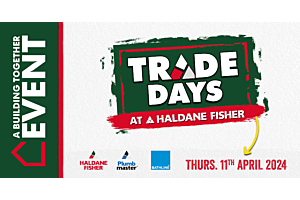“Which door latch?” is a question we hear a lot. Sourcing or replacing door catches and latches feels daunting, with lots of terms you may not have heard before. Do you need a door lock latch for your door? A simple door latch? Can you fit door catches and latches yourself?
A tubular latch is a simple spring-assisted mechanical device, housed in a metal ‘tube’ or casing, which allows a door to be held closed without locking. Tubular latches are the most common latch for internal doors. They can be fitted for use with door handles and door knobs, so are suitable for all types of home decor. Compared to a mortice lock, a tubular mortice latch is much easier to fit, with cutting and drilling needed on the door.
The backplate of a tubular door latch is the plate you see on the edge of the door. The striker or strike plate is opposite it in the door frame - the closing mechanism from the latch sits inside the hole in the middle of the strike plate. The strike plate also prevents the door frame from being scuffed or worn as the door is opened and closed.
What size of door latch do I need?
There are different tubular latch sizes. The most common sizes are 63mm and 76mm. This measurement refers to the case length which is the length of the ‘tube’ or casing of the whole lock mechanism. It refers to how deep within the door the tube will reach. The back plate will sit flush to the edge of the door.
Our Atlantic Antique Brass CE Fire Rated Bolt Through Tubular Latch is available in a 63mm or a 73mm size.
The length to choose may be dictated by the size of your door. You also want to consider where you want your handle to sit. The next measurement to consider therefore is the backset. Backset sizes refer to where your handle will sit on the door - this is the part of the lock where your door handle or door knob will be connected to the tubular lock.
For a 63mm case length measurement, the backset is usually approx 45mm. This means the middle of your handle or door knob will be 45mm away from the edge of the doorframe. If you are fitting a doorknob, it’s important to consider its diameter, and check whether you have enough room to turn it.
There will always be slight size variations in metric sizing, so imperial can be good to give you a rough idea, with metric better if you have very fine, exacting measurements to stick to. A 2.5 inch case length can vary by a few millimetres; a good example is our Carlisle Brass Florentine Bronze Tubular Latch which, at 64mm with a 44mm backset, is a 2.5” tubular latch.
For a lever handle on a rose or on a back plate, a smaller backset is needed than for a door knob because your handle only goes up and down. You don’t move your hand all the way around the rose or back plate; with the door knob, if the back plate is too small, you can hit your knuckles off the door frame.
Door knob diameters are varied; we have this Atlantic Antique Brass Old English Ripon Solid Brass Reeded Mortice Knob with a 50mm diameter, compared to the Eurospec Satin Stainless Steel Steelworx Square Knobset with a 62mm diameter.
Here are the common sizes:
- Case length 64mm (2.5 inches) = 45mm backset
- 76mm (3 inches) = 55mm backset
- 102mm (4 inches) = 80mm backset
- 127mm (5 inches) = 107mm backset
- 152mm (6 inches) = 130mm backset
What type of tubular door latch do I need?
Having looked at sizes of latch, next we look at the different types of latch available.
Standard tubular latches will be single sprung and therefore not recommended for use with door knobs, or unsprung door handles. Ideally they would be used with sprung lever handles.
A double sprung tubular latch has a heavyweight double spring mechanism that will be essential for a knob or handle which is unsprung. A heavy sprung latch is essential for making sure they return to their original position once turned.
Heavy duty tubular latches will be needed for doors which are used frequently, but be aware that “heavy duty” does not necessarily mean the latch is double sprung. If you have a high-traffic door and plan to use an unsprung handle or door knob, try to select a double sprung heavy duty tubular latch for best results.
The Atlantic Black Nickel Heavy Duty Bolt Through Tubular Latch is a great example of a latch that would be ideal for an unsprung door knob. It comes in the slightly larger 100mm (4”) case length with a 75mm backset, is double sprung, and comes with a 10 year mechanical guarantee for extra peace of mind.
If you have any more questions about door latches and catches, the ironmongery specialists here at Key Hardware are happy to help! Call in-store or click the box in the bottom right of the screen of this website to chat online to one of our experts.





